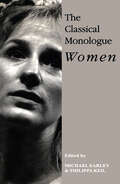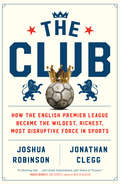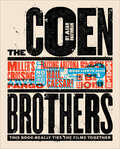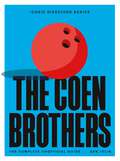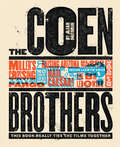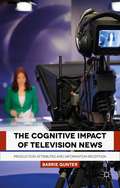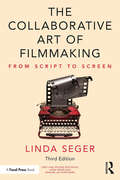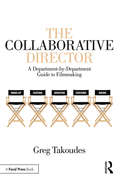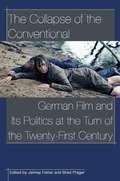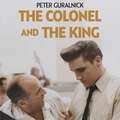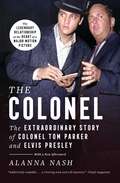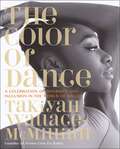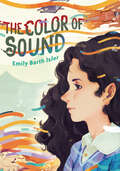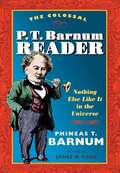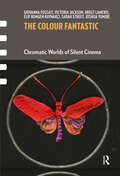- Table View
- List View
The Classical Monologue (W): Women
by Michael Earley Philippa KeilFirst Published in 1993. Routledge is an imprint of Taylor & Francis, an informa company.
The Classical Music Industry (Routledge Research in Creative and Cultural Industries Management)
by Chris Dromey Julia HaferkornThis volume brings together academics, executives and practitioners to provide readers with an extensive and authoritative overview of the classical music industry. The central practices, theories and debates that empower and regulate the industry are explored through the lens of classical music-making, business, and associated spheres such as politics, education, media and copyright. The Classical Music Industry maps the industry’s key networks, principles and practices across such sectors as recording, live, management and marketing: essentially, how the cultural and economic practice of classical music is kept mobile and alive. The book examining pathways to professionalism, traditional and new forms of engagement, and the consequences of related issues—ethics, prestige, gender and class—for anyone aspiring to ‘make it’ in the industry today. This book examines a diverse and fast-changing sector that animates deep feelings. The Classical Music Industry acknowledges debates that have long encircled the sector but today have a fresh face, as the industry adjusts to the new economics of funding, policy-making and retail The first volume of its kind, The Classical Music Industry is a significant point of reference and piece of critical scholarship, written for the benefit of practitioners, music-lovers, students and scholars alike offering a balanced and rigorous account of the manifold ways in which the industry operates.
The Classical Style: Haydn, Mozart, Beethoven
by Charles RosenThis book treating the three most beloved composers of the Vienna School is considered basic to any study of classical-era music. Drawing on his rich experience and intimate familiarity with the works of these giants, Charles Rosen presents his keen insights in clear and persuasive language.<P><P> Winner of the National Book Award
The Classrooms All Young Children Need
by Patricia M. CooperThe book identifies a pedagogical model organized around two complementary principles: a curriculum that promotes play and imagination, and the idea of classrooms as fair places where young children of every color, ability, and disposition are welcome.
The Club: How the English Premier League Became the Wildest, Richest, Most Disruptive Force in Sports
by Joshua Robinson Jonathan CleggThe Club is the previously untold inside story of how English soccer’s Premier League became the wildest, richest, most popular sports product on the planet. This is a sports and business tale of how money, ambition, and twenty-five years of drama remade an ancient institution into a twenty-first-century entertainment empire. No one knew it when their experiment began, but without any particular genius or acumen, the motley cast of billionaires and hucksters behind the modern Premier League struck gold. Pretty soon, everyone wanted to try their luck, from Russian oligarchs to Emirati sheikhs, American tycoons, and Asian Tiger titans. Some succeeded beyond their wildest dreams. Some lost everything. Today, players are sold for tens of millions, clubs are valued in the billions, and games are beamed out to nearly two hundred countries, all while the league struggles to preserve its English soul. Deeply researched and drawing on one hundred exclusive interviews, including the key decision makers at every major English team, The Club is the definitive and wildly entertaining narrative of how the Premier League took over the world.
The Co-production Landscape in Europe: From Eurimages to Netflix (Palgrave European Film and Media Studies)
by Petar MitricThis book explores the evolving landscape of European film and television co-productions, from traditional models supported by Eurimages to new collaborations shaped by global streaming platforms like Netflix. It examines how European co-production policies have influenced industry practices, funding structures, and audience engagement, balancing artistic, economic, and cultural priorities. Through historical analysis, case studies, and stakeholder perspectives – including policymakers, industry professionals, and audiences – this book offers fresh insights into the challenges and opportunities facing European audiovisual production today. It is essential reading for scholars, industry professionals, and policymakers interested in transnational media, cultural policy, and the future of European cinema.
The Coen Brothers (Text-only Edition): This Book Really Ties the Films Together
by Adam NaymanFans of Fargo, The Big Lebowski, No Country for Old Men, and other modern classics will enjoy this “definitive history of the Coen brothers oeuvre” (Indiewire).From such cult hits as Raising Arizona (1987) and The Big Lebowski (1998) to major critical darlings Fargo (1996), No Country for Old Men (2007), and Inside Llewyn Davis (2013), Ethan and Joel Coen have cultivated a bleakly comical, instantly recognizable voice in modern American cinema. In The Coen Brothers: This Book Really Ties the Films Together, film critic Adam Nayman carefully sifts through their complex cinematic universe in an effort to plot, as he puts it, “some Grand Unified Theory of Coen-ness.” With a combination of biography, close analysis, and enlightening interviews with key Coen collaborators, this book honors the films’ singular mix of darkness and levity, and is the definitive exploration of the Coen brothers’ oeuvre.
The Coen Brothers Second Edition
by Ronald BerganBrought completely up to date, this insightful biography remains "a must for any self-respecting Coen fan" (Screentrade). This fully updated edition of the first biography of the Coen Brothers includes their complete work so far, from Blood Simple to Inside Llewyn Davis (2013), with a reassessment of their remarkable career as a whole. Joel and Ethan Coen have pulled off the ultimate balancing act. Despite having their movies financed and distributed by major studios, they have managed to remain true independents, rejecting commercial clichés and never giving up on their own fiercely idiosyncratic vision. While doing so, they have established themselves among the world's leading filmmakers. From their startling debut, Blood Simple (1984), all of their movies reveal a distinctive stamp: a flamboyant visual style, richly conceived characters, crisp dialogue, and brilliant casting. They have revitalized old Hollywood genres such as noir, screwball, and the western, giving them a contemporary sensibility. In this biography, Ronald Bergan traces the brothers' Jewish roots, their beginnings as film geeks in suburban Minneapolis, their battle to get their first feature made and released, through their early features and the movies of their maturity. He gives blow-by-blow accounts of the making of each movie. New chapters cover all those released since O Brother, Where Art Thou? (2000), with which the first edition of this book ended.
The Coen Brothers: The Complete Unofficial Guide (Iconic Directors)
by Dan JolinGangster movie, Western, film noir, rom com, screwball, musical, even the Biblical epic... There are few genres left untouched and untwisted by sibling visionaries Joel and Ethan Coen. Since 1984's Blood Simple, the inscrutable brothers have effortlessly forged their own cinematic path, avoiding prevailing trends while crafting bold, stylish and witty movies that feel fresh and distinctive despite being deeply rooted in their creators' filmic passion and knowledge.This is a definitive guide to that path, bringing the reader through Joel and Ethan's 20 features (not counting the mezzanine) and exploring thethemes, the tropes, the gags, the familiar faces - while also taking in all the Coen curios that litter this quirkily winding byway.From Texas to Minnesota, from Homer to Shakespeare, from Bluegrass to Busby Berkeley, from wrestling to bowling, from lost hats to severed toes, this book covers everything that one might reasonably consider (to use a word that would likely make Joel and Ethan wince) 'Coenesque'... And then some.
The Coen Brothers: The Complete Unofficial Guide (Iconic Directors)
by Dan JolinGangster movie, Western, film noir, rom com, screwball, musical, even the Biblical epic... There are few genres left untouched and untwisted by sibling visionaries Joel and Ethan Coen. Since 1984's Blood Simple, the inscrutable brothers have effortlessly forged their own cinematic path, avoiding prevailing trends while crafting bold, stylish and witty movies that feel fresh and distinctive despite being deeply rooted in their creators' filmic passion and knowledge.This is a definitive guide to that path, bringing the reader through Joel and Ethan's 20 features (not counting the mezzanine) and exploring thethemes, the tropes, the gags, the familiar faces - while also taking in all the Coen curios that litter this quirkily winding byway.From Texas to Minnesota, from Homer to Shakespeare, from Bluegrass to Busby Berkeley, from wrestling to bowling, from lost hats to severed toes, this book covers everything that one might reasonably consider (to use a word that would likely make Joel and Ethan wince) 'Coenesque'... And then some.
The Coen Brothers: This Book Really Ties the Films Together
by Adam Nayman“Color stills, behind-the-scenes stories, interviews and insightful analysis of each film…will put a smile on the face of all film buffs.” ?The Detroit Free PressFrom such cult hits as Raising Arizona (1987) and The Big Lebowski (1998) to major critical darlings Fargo (1996), No Country for Old Men (2007), and Inside Llewyn Davis (2013), Ethan and Joel Coen have cultivated a bleakly comical, instantly recognizable voice in modern American cinema. In The Coen Brothers: This Book Really Ties the Films Together, film critic Adam Nayman carefully sifts through their complex cinematic universe in an effort to plot, as he puts it, “some Grand Unified Theory of Coen-ness.” The book combines critical text—biography, close film analysis, and enlightening interviews with key Coen collaborators—with a visual aesthetic that honors the Coens’ singular mix of darkness and levity. Featuring film stills, beautiful and evocative illustrations, punchy infographics, and hard insight, this book is the definitive exploration of the Coen brothers’ oeuvre.
The Cognitive Impact of Television News
by Barrie GunterResearch shows that, while people around the world consistently nominate television as their most important news source, much of the content of news bulletins is lost to viewers within moments. In response, Barrie Gunter argues that this can be explained by the way in which televised news is written, packaged and presented.
The Collaboration
by Ben UrwandTo continue doing business in Germany after Hitler's ascent to power, Hollywood studios agreed not to make films that attacked the Nazis or condemned Germany's persecution of Jews. Ben Urwand reveals this bargain for the first time--a "collaboration" (Zusammenarbeit) that drew in a cast of characters ranging from notorious German political leaders such as Goebbels to Hollywood icons such as Louis B. Mayer. At the center of Urwand's story is Hitler himself, who was obsessed with movies and recognized their power to shape public opinion. In December 1930, his Party rioted against the Berlin screening of All Quiet on the Western Front, which led to a chain of unfortunate events and decisions. Fearful of losing access to the German market, all of the Hollywood studios started making concessions to the German government, and when Hitler came to power in January 1933, the studios--many of which were headed by Jews--began dealing with his representatives directly. Urwand shows that the arrangement remained in place through the 1930s, as Hollywood studios met regularly with the German consul in Los Angeles and changed or canceled movies according to his wishes. Paramount and Fox invested profits made from the German market in German newsreels, while MGM financed the production of German armaments. Painstakingly marshaling previously unexamined archival evidence, The Collaboration raises the curtain on a hidden episode in Hollywood--and American--history.
The Collaborative Art of Filmmaking: From Script to Screen
by Linda SegerThe Collaborative Art of Filmmaking: From Script to Screen explores what goes into the making of Hollywood’s greatest motion pictures. Join veteran script consultant Linda Seger as she examines contemporary and classic screenplays on their perilous journey from script to screen. This fully revised and updated edition includes interviews with over 80 well-known artists in their fields including writers, producers, directors, actors, editors, composers, and production designers. Their discussions about the art and craft of filmmaking – including how and why they make their decisions – provides filmmaking and screenwriting students and professionals with the ultimate guide to creating the best possible "blueprint" for a film and to also fully understand the artistic and technical decisions being made by all those involved in the process.
The Collaborative Director: A Department-by-Department Guide to Filmmaking
by Greg TakoudesThe Collaborative Director: A Department-by-Department Guide to Filmmaking explores the directorial process in a way that allows the director to gather the best ideas from the departments that make up a film crew, while making sure that it is the director’s vision being shown on screen. It goes beyond the core concepts of vision, aesthetic taste, and storytelling to teach how to effectively collaborate with each team and fully tap into their creative potential. The structure of the book follows a budget top sheet, with each chapter describing the workflow and responsibilities of a different department and giving insights into the methods and techniques a director can use to understand the roles and dynamics. Each chapter is divided into four sections. Section one provides an overview of the department, section two focuses on directors who have used that department in notably effective ways, section three looks at collaboration from the reverse perspective with interviews from department members, and section four concludes each chapter with a set of tasks directors can use to prepare. Ideal for beginner and intermediate filmmaking students, as well as aspiring filmmakers and early career professionals, this book provides invaluable insight into the different departments, and how a director can utilize the skills and experience of a crew to lead with knowledge and confidence.
The Collaborative Habit: Life Lessons for Working Together
by Jesse Kornbluth Twyla TharpIn a career that has spanned four decades, choreographer Twyla Tharp has collaborated with great musicians, designers, thousands of dancers, and almost a hundred companies. She's experienced the thrill of shared achievement and has seen what happens when group efforts fizzle. Her professional life has been -- and continues to be -- one collaboration after another. In this practical sequel to her national bestseller The Creative Habit, Tharp explains why collaboration is important to her -- and can be for you. She shows how to recognize good candidates for partnership and how to build one successfully, and analyzes dysfunctional collaborations. And although this isn't a book that promises to help you deepen your romantic life, she suggests that the lessons you learn by working together professionally can help you in your personal relationships. These lessons about planning, listening, organizing, troubleshooting, and using your talents and those of your coworkers to the fullest are not limited to the arts; they are the building blocks of working with others, like if you're stuck in a 9-to-5 job and have an unhelpful boss. Tharp sees collaboration as a daily practice, and her book is rich in examples from her career. Starting as a twelve-year-old teaching dance to her brothers in a small town in California and moving through her work as a fledgling choreographer in New York, she learns lessons that have enriched her collaborations with Billy Joel, Jerome Robbins, Mikhail Baryshnikov, Bob Dylan, Elvis Costello, David Byrne, Richard Avedon, Milos Forman, Norma Kamali, and Frank Sinatra. Among the surprising and inspiring points Tharp makes in The Collaborative Habit: -Nothing forces change more dramatically than a new partnership. -In a good collaboration, differences between partners mean that one plus one will always equal more than two. A good collaborator is easier to find than a good friend. If you've got a true friendship, you want to protect that. To work together is to risk it. -Everyone who uses e-mail is a virtual collaborator. -Getting involved with your collaborator's problems may distract you from your own, but it usually leads to disaster. -When you have history, you have ghosts. If you're returning to an old collaboration, begin at the beginning. No evocation of old problems and old solutions. -Tharp's conclusion: What we can learn about working creatively and in harmony can transform our lives, and our world.
The Collapse of the Conventional: German Film and Its Politics at the Turn of the Twenty-First Century
by Brad Prager Jaimey FisherAnalyzes a diverse body of films and investigates the renaissance that has taken place in German cinema since the turn of the twenty-first century.
The Colonel and the King: Tom Parker, Elvis Presley and the Partnership that Rocked the World
by Peter GuralnickIn early 1955, Colonel Tom Parker (the manager of the number-one country music star of the day) heard that an unknown teenager from Memphis had just drawn a crowd of more than 800 people to a Texas schoolhouse and headed south to investigate. Within a matter of days, Parker was sending out telegrams and letters to promoters and booking agents: 'We have a new boy that is absolutely going to be one of the biggest things in the business in a very short time. His name is ELVIS PRESLEY.' The close personal bond between Elvis and the Colonel is something that has never been fully portrayed before. It was a relationship founded on mutual admiration and support. From the outset, the Colonel defended Elvis fiercely and indefatigably against RCA executives, Elvis' own booking agents and movie moguls. But in their final years together, the story grew darker, as the Colonel found himself unable to protect Elvis from himself - or to control growing problems of his own. Featuring troves of previously unpublished correspondence from the Colonel's own archives, revelatory for both their insights and their emotional depth, The Colonel and the King provides a groundbreaking dual portrait of the relationship between the iconic artist and his legendary manager and a unique perspective on not one but two American originals. A tale of the birth of the modern-day superstar (an invention almost entirely of Parker's making) by the most acclaimed music writer of his generation, it presents these two misunderstood icons as they've never been seen before: with all of their brilliance, humour and flaws on full display.
The Colonel and the King: Tom Parker, Elvis Presley and the Partnership that Rocked the World
by Peter GuralnickIn early 1955, Colonel Tom Parker (the manager of the number-one country music star of the day) heard that an unknown teenager from Memphis had just drawn a crowd of more than 800 people to a Texas schoolhouse and headed south to investigate. Within a matter of days, Parker was sending out telegrams and letters to promoters and booking agents: 'We have a new boy that is absolutely going to be one of the biggest things in the business in a very short time. His name is ELVIS PRESLEY.' The close personal bond between Elvis and the Colonel is something that has never been fully portrayed before. It was a relationship founded on mutual admiration and support. From the outset, the Colonel defended Elvis fiercely and indefatigably against RCA executives, Elvis' own booking agents and movie moguls. But in their final years together, the story grew darker, as the Colonel found himself unable to protect Elvis from himself - or to control growing problems of his own. Featuring troves of previously unpublished correspondence from the Colonel's own archives, revelatory for both their insights and their emotional depth, The Colonel and the King provides a groundbreaking dual portrait of the relationship between the iconic artist and his legendary manager and a unique perspective on not one but two American originals. A tale of the birth of the modern-day superstar (an invention almost entirely of Parker's making) by the most acclaimed music writer of his generation, it presents these two misunderstood icons as they've never been seen before: with all of their brilliance, humour and flaws on full display.
The Colonel and the King: Tom Parker, Elvis Presley, and the Partnership that Rocked the World
by Peter GuralnickFrom the award-winning biographer of Elvis Presley, a groundbreaking dual portrait of the relationship between the iconic artist and his legendary manager—drawing on a wealth of the Colonel's never-before-seen correspondence to reveal that this oft-reviled figure was in fact a confidant, friend, and architect of his client&’s success In early 1955, Colonel Tom Parker—manager of the number-one country music star of the day—heard that an unknown teenager from Memphis had just drawn a crowd of more than eight hundred people to a Texas schoolhouse, and headed south to investigate. Within days, Parker was sending out telegrams and letters to promoters and booking agents: &“We have a new boy that is absolutely going to be one of the biggest things in the business in a very short time. His name is ELVIS PRESLEY.&” Later that year, after signing with RCA, the young man sent a telegram of his own: &“Dear Colonel, Words can never tell you how my folks and I appreciate what you did for me.... I love you like a father.&” The close personal bond between Elvis and the Colonel has never been fully portrayed before. It was a relationship founded on mutual admiration and support. From the outset, the Colonel defended Elvis fiercely and indefatigably against RCA executives, Elvis&’s own booking agents, and movie moguls. But in their final years together, the story grew darker, as the Colonel found himself unable to protect Elvis from himself or control growing problems of his own. Featuring troves of previously unpublished correspondence, revelatory for both its insights and emotional depth, The Colonel and the King provides a unique perspective on not one but two American originals. A tale of the birth of the modern-day superstar (an invention almost entirely of Parker&’s making) by Peter Guralnick, the most acclaimed music writer of his generation, it presents these two misunderstood icons as they&’ve never been seen before: with all of their brilliance, humor, and flaws on full display.
The Colonel: The Extraordinary Story of Colonel Tom Parker and Elvis Presley
by Alanna NashIn The Colonel, Alanna Nash, the author of Golden Girl: The Story of Jessica Savitch, explores in depth the amazing story of Colonel Tom Parker, the man behind the legend and the myth of Elvis Presley. The result is a book that reads like the most riveting of real-life detective stories -- one that will completely change your view of Presley's life, success, and death. While scores of books have been written about Elvis Presley, this is the first meticulously researched biography of Tom Parker written by someone who knew him personally. And for anyone truly interested in the performer many consider the greatest and most influential of the twentieth century, it is impossible to understand how Elvis came to be such a phenomenon without examining the life and mind of Parker, the man who virtually controlled Elvis's every move. Alanna Nash has been covering the story of Elvis Presley and Colonel Tom Parker since the day of Presley's funeral in Memphis, Tennessee. She was the first journalist allowed to view Presley's body, a compelling and surprising sight. But the profile of Parker attending the funeral in a Hawaiian shirt and a baseball cap was even stranger, and led her to investigate the man behind the myth. It has been known for twenty years that Thomas Andrew Parker was, in fact, born in Holland as Andreas Cornelis van Kuijk. But Nash has dug much deeper and, in a masterpiece of reporting, unearthed never-before-seen documents, including Parker's army records and psychiatric evaluations, and the original police report of an unsolved murder case in Holland that lies at the heart of the Parker mystery. In the process of weighing the evidence, she answers the biggest riddle in the history of the music industry, as it becomes clear that every move Parker made in the handling of Elvis Presley -- from why he never allowed Elvis to perform in Europe, to why he didn't halt Elvis's drug use, to why he put him in so many mediocre movies, and even the Colonel's direction of Presley's army career -- was designed to protect Parker's own secrets. Filled with startling new material, her book challenges even the most familiar precepts of the Presley saga -- everything we presumed about Parker's handling of the world's most famous entertainer must now be reevaluated in the light of information Nash reveals about Parker, who cared little for Presley beyond what the singer could do to bolster the Colonel's precarious position as an illegal alien. Elvis Presley, as one of Parker's unwitting victims, paid a major price for the Colonel's past and his overwhelming need to be more important than his client. As a result, Presley was never allowed to reach his potential and died in drug-induced frustration over his stunted and mismanaged career. In this astonishing, impeccably written, and vastly entertaining book, Nash proves that the only figure in American popular culture as fascinating as Elvis Presley is Colonel Tom Parker, the man who shaped Elvis, who in turn helped shape us.
The Color of Dance: A Celebration of Diversity and Inclusion in the World of Ballet
by TaKiyah Wallace-McMillianFrom the photographer behind the Instagram sensation Brown Girls Do Ballet, this stunning coffee-table book showcases breathtaking images of ballerinas of color of all ages and levels that reflect today&’s beautifully diverse world of dance. For decades the prominent image of a ballet dancer has been a white body with pale clothing. It took 75 years for American Ballet Theatre to have its first African American female principal dancer, Misty Copeland. When TaKiyah Wallace-McMillian went to enroll her three-year-old daughter into her first ballet class, she immediately saw this lack of diversity and representation—even on her local dance studio&’s website. Within weeks TaKiyah, a freelance photographer, began shooting a project she called Brown Girls Do Ballet, which eventually became an Instagram hit and a nonprofit organization that provides resources, mentorship, inspiration, and encouragement to young dancers of color worldwide. For her first book, The Color of Dance, TaKiyah traveled around the United States seeking out dancers of African, Asian, East Indian, Hispanic, and Native American ancestry. With these more than 190 breathtaking images of colorful ballerinas of all ages and levels, both amateur and professional, TaKiyah gives a voice to dancers who have been underrepresented for too long. With dozens of quotes throughout from ballerinas themselves, The Color of Dance redefines what this classically Eurocentric art form has looked like for centuries and will inspire dancers—and all of us—to pursue our dreams no matter what barriers are put in front of us.
The Color of Sound
by Emily Barth Isler"[A] salient celebration of family, music, and neurodiversity." —starred, Publishers Weekly "A top pick for any middle school collection; a perfect book club pick and a reminder to all that patience and understanding can change lives." —starred, School Library Journal Twelve-year-old Rosie is a musical prodigy whose synesthesia allows her to see music in colors. She’s never told anyone this, though. She already stands out more than enough as a musical “prodigy” who plays better than most adults. Rosie’s mom expects her to become a professional violinist. But this summer, Rosie refuses to play. She wants to have a break. To make friends and discover new hobbies. To find out who she would be if her life didn’t revolve around the violin. So instead of attending a prestigious summer music camp, Rosie goes with her mom to visit her grandparents. Grandma Florence’s health is failing, Grandpa Jack doesn’t talk much, and Rosie’s mom is furious with her for giving up the violin. But Rosie is determined to make the most of her “strike.” And when she meets a girl who seems distinctly familiar, she knows this summer will be unlike any other. With help from a mysterious glitch in time—plus her grandparents, an improv group, and a new instrument—Rosie uncovers secrets that change how she sees her family, herself, and the music that’s always been part of her.
The Colossal P. T. Barnum Reader: Nothing Else Like It in the Universe
by Phineas T. Barnum James W. CookThe Colossal P. T. Barnum Reader reveals the trailblazing American showman as, by turns, a moral reformer, a habitual hoaxer, an insightful critic, a savvy "puffer," a master of images, a sparkling writer, a relentless provocateur, and an early advocate of "family" entertainments. Taken together, these selections paint a new and more complete portrait of this complex man than has ever been seen before.
The Colour Fantastic: Chromatic Worlds of Silent Cinema (Framing Film)
by Victoria Jackson Joshua Yumibe Sarah Street Elif Rongen-Kaynakçi Bregt Lameris Giovanna FossatiSparked by a groundbreaking Amsterdam workshop titled Disorderly Order: Colours in Silent Film, scholarly and archival interest in colour as a crucial aspect of film form, technology and aesthetics has enjoyed a resurgence in the past twenty years. In the spirit of the workshop, this anthology brings together international experts to explore a diverse range of themes that they hope will inspire the next twenty years of research on colour in silent film. Taking an interdisciplinary approach, the book explores archival restoration, colour film technology, colour theory, and experimental film alongside beautifully saturated images of silent cinema.
